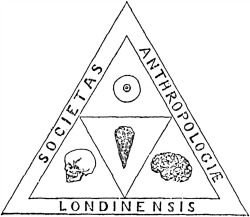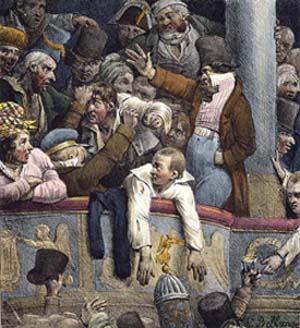Jonathan L. Friedmann, Ph.D.
“The anthropologist has become so familiar with the diversity of ways in which different peoples behave in similar situations that he is not apt to be surprised by even the most exotic customs.” Thus begins Horace Miner’s satirical 1956 essay, “Body Ritual Among the Nacirema,” which details a culture rife with magic, superstitions, and exotic routines. Their foundational belief is that the human body is ugly and prone to disease. Extreme measures are taken to ameliorate this natural state. Bathing and excretory acts are performed in household shrines adorned with hanging chests filled with elixirs and charms. Men scrape and lacerate the surface of their faces with sharp instruments. Teeth are ritualistically cleansed with a bundle of hog hairs lathered with magical powders. Bewitched people hire witch-doctors to exorcise demons from their heads.
At some point, the reader realizes that Nacirema is American spelled backwards. The shrine is a bathroom, the hanging chest is a medicine cabinet, the face-scraping is a shave, the mouth-cleaner is a toothbrush, the witch-doctor is a therapist. Miner’s subtle wit sensitizes us to our own ethnocentricity. “Primitiveness” is less a matter of the practices themselves than our assumptions about them. Outsider interpretations often conflict with insider understandings.
The wider our view of humanity becomes, the more we recognize its sundry shapes and forms. Music was once widely conceived as a “universal language” in the literal sense: the same sounds touch the same emotions and mean the same things the world over. Nineteenth-century Euro-American musicologists perpetuated this assumption, even as fieldwork mounted showing drastic variations between social structures, spoken languages, dress, food, and belief systems of far-flung cultures.
Berthold Seemann, a German botanist, was among the first to criticize this ignorant stance. His remarks, delivered at the 1870 meeting of the Anthropological Society of London, are noteworthy both for their clarity and their honesty. He doubted whether Western European nations, connected by frequent cultural exchange, possessed music that could be interpreted the same way across borders. As his observation extended eastward, conventional associations were turned on their head: songs of joy were sung in modes closely resembling the minor. Looking further east, music became increasingly less intelligible. With considerable self-awareness, he confessed that the songs of “the great Mongolian races,” while surely pleasant for them, were “positively painful” to his ears.
Ethnomusicology, the study of music in cultural context, traces its lineage to Seemann and other late-nineteenth-century mold-breakers. As ethnomusicology has evolved, so has its nomenclature. Distinctions between primitive and advanced, esoteric and exoteric have fallen out of favor. Researchers strive to appreciate music on its own terms, and rely upon insider knowledge. Yet, as much as the scholar tries to step back, the discipline—like all others—requires theory, method, and interpretation. As such, the Nacirema remains a cautionary tale.
Visit Jonathan’s website to keep up on his latest endeavors, browse his book and article archives, and listen to sample compositions.




